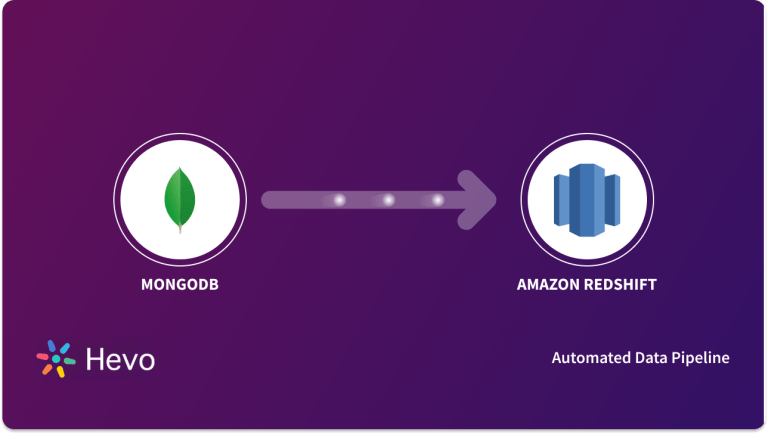 Quick Takeaway
Quick TakeawayTo migrate data from MongoDB to CSV, you can use either the mongoexport command-line tool or tools like Studio 3T.
The mongodbexport command allows you to export data from MongoDB collections into a CSV file. You can specify the database, collection, fields to export, and the output file. It’s a great option for users who prefer automating their data exports through scripts.
Whereas, using tools like Studio 3T provides a GUI-based solution for MongoDB users who prefer a visual interface. It offers an easy way to export MongoDB collections to CSV with just a few clicks. With features like advanced filtering and mapping, Studio 3T allows users to fine-tune their export based on specific needs.
Exporting MongoDB data for further analysis in Excel is a common need. While MongoDB stores complex data, Excel provides convenience for slicing and visualizing that data. This article outlines two simple methods to export MongoDB to Excel-compatible formats like CSV that can then be imported into Excel.
With just a few steps, you can leverage MongoDB’s flexible documents and Excel’s analytical capabilities in tandem. By following the easy guide, you’ll be able to integrate your rich MongoDB data sets into Excel for simplified reporting and dashboards. Read on to learn how experts export key insights from MongoDB directly into the Excel environment.
So, whether you’re a beginner or an experienced user, read on to learn more to export MongoDB to Excel.
Table of Contents
2 Easy Methods: Export MongoDB To Excel & CSV
To export MongoDB to Excel, you need to first export your MongoDB documents to CSV file format. This can be done in multiple ways as listed below:
With Hevo Data, you can easily integrate MongoDB with a wide range of destinations. While we support MongoDB as sources, our platform ensures seamless data migration to the destination of your choice. Simplify your data management and enjoy effortless integrations.
Check out how Hevo can be of help:
- No-Code Data Pipelines: Set up data transfers from MongoDB to your desired destination without writing a single line of code.
- Automated Schema Mapping: Automatically detect and map MongoDB schemas to match the destination structure, ensuring accurate data transfer.
- Secure Data Transfer: Ensure your data is protected during migration with encryption and secure connections.
Method 1: Using MongoExport
Mongoexport is a command-line utility that is used to export data from a MongoDB instance in a CSV file format. mongoexport runs directly on the MongoDB command line and not on the Mongo Shell. It can be used in the following way:
mongoexport --collection=<coll> [options]mongoexport is part of MongoDB’s tools package, which is available through the MongoDB Download Center. The tools package must be installed well in advance so that the command-line can be accessed.
The user must specify the collection they want to export along with an output file name.
mongoexport helps to export MongoDB to Excel in CSV format in two simple steps:
Step 1: Connecting To A MongoDB Instance
A MongoDB instance running on port “27017”, doesn’t necessarily require a host or port to be specified.
Example query: Here stores represents the database from which sparkle collection is being exported.
mongoexport --collection=sparkle --db=stores --out=sparkle.csva) Specifying the collection that you want to export, can be done in two ways:
--collection=<collection> or -c=<collection>b) Specifying the output file that you want to export to, can similarly be done in two ways:
--out=<output_name> or -o=<output_name>c) Specifying the database you will be exporting from is represented as:
--db=<database_name> or -d=<database_name>Step 2: Commands To Export MongoDB Documents In CSV
To export MongoDB to Excel & CSV format, you have to specify all the fields in your export query that you want, along with the order you want them in.
Example query:
mongoexport --db=customers --collection=info --type=csv --fields=name,address,phone --out=/opt/backups/info.csvThis query exports data from the collection named info which is a part of the database called customers, in the desired CSV format in a file stored as /opt/backups/info.csv.
Name, address, phone
Rahul Batra, Golf Course Gurugram, 98xxxxxxx
Anirudh Behal, Estancia, Guduvanchery, 81xxxxxxxIt is also possible to specify the required fields using a text file, which contains only one field per line. Such a file is usually in the .txt format.
Example file: Here name, address & phone fields are specified in a file called field_name.txt.
Name
Address
PhoneThis method requires using the –fieldFile option while writing the query to mention which text file needs to be looked into for getting the field names.
mongoexport --db=customers --collection=info --type=csv --fieldFile=field_name.txt --out=/opt/backups/info.csvThe output CSV file can be tailored to return only the documents, excluding the field names.
This is possible by including –noHeaderLine option in the export query, this option suppresses the output field to have only the documents.
Example query:
mongoexport --db=customers --collection=info --type=csv --fields=name, address, phone --noHeaderLine --out=/opt/backups/contacts.csvExample output:
Rahul Batra, Golf Course Gurugram, 98xxxxxxx
Anirudh Behal, Estancia, Guduvanchery, 81xxxxxxxThis is how mongoexport can be used to export MongoDB to Excel & CSV format.
Once you have used MongoDB export query result to CSV, you can visit the desired collection/document by going to the file location on your system and opening it to view the exported data using any spreadsheet application like Microsoft Excel.
For more information on the mongoexport syntax and its various operations, you can look into the mongoexport manual.
Limitations of Using Manual Method to Export MongoDB to Excel and CSV
- Error-Prone: Exporting data using the manual method can be cumbersome and has the possibility of including of lot of errors.
- Security issues: Usually, there is direct access to the MongoDB database while using the manual method. This may pose a security risk.
Method 2: Using Tools Such As Studio 3T
Studio 3T provides the Export Wizard facility, which helps export MongoDB to Excel, query results, and even collections in various formats like CSV. The process begins by connecting with the desired MongoDB instance and then working on the collection and its documents using the Studio 3T wizard.
Using Studio 3T, you can export MongoDB to Excel & CSV formats in 2 steps:
Step 1: Using The Wizard Toolbar
Click on the Export option and then use a right-click to select any database followed by a collection that you want to export.
With Studio 3T, you can export data & simultaneously query in applications like Visual Query Builder, IntelliShell, SQL, etc.
The Export configuration allows to dynamically change the source of export i.e. database, connection, etc. You can click on the export source and make changes as required.
The progress of an export process can be monitored using the operations window which is usually found in the bottom left corner of the wizard.
Step 2: Exporting Documents In CSV & Excel
Begin by launching the wizard, and select the source from where you want to export the document. This enables you to export MongoDB to Excel using the CSV export file which can be seamlessly absorbed in your Excel sheets.
Select the final export format as CSV.
The Studio 3T Wizard performs a scan of 500 documents by default to find the desired fields from your collection. You can select the full scan option to detect all the fields or manually add fields using the add custom field option.
This will open a new tab called export overview along with a default tab by the name of Export unit#1-CSV.
There are six parts of the Export unit#1-CSV tab:
- Source: Displays the source of the document.
- Select Fields: It is used to add/remove custom fields and then export data.
- Target: Choose between clipboard/file & make sure the file path is defined.
- CSV format: It is used to configure settings like preset, delimit, record separator, etc.
- Other: It is used to configure non-formatting settings such as how to treat null values, column headers, etc.
- Output preview: It will display a preview of the CSV file.
Click on execute to export MongoDB to Excel & CSV format using Studio 3T.
Limitations of Using Studio 3T
- Complex Interface: The Studio 3T interface is not user-friendly, with many tabs and modals popping up frequently. This makes it difficult to navigate through and complete the tasks.
- Inefficient Exporting Feature: The exporting feature of Studio 3T does not have more formats available to export data in. Also, there is no option to save the export once it has been completed.
Use Cases of Exporting MongoDB to Excel and CSV
- Data Analysis: Excel and CSV files offer a properly structured format for storing and retrieving data, unlike MongoDB. Also, both CSV and Excel files are compatible with different data analysis tools like Python, R and SQL. This makes them suitable for effective data analysis.
- Reporting: Both Excel and CSV files can be used to prepare reports including charts and visualizations. Thus MongoDB export to Excel or MongoDB export to CSV can help organizations to make better business decisions.
Conclusion
This article teaches you how to export MongoDB to Excel to replicate your documents with ease and answers all your queries regarding mongoexport to perform MongoDB export query result to CSV, and Studio 3T.
It briefly introduces these methods and their operations to help the users understand them better and use them to export MongoDB to Excel in the most efficient way possible. It also introduces an alternative method that is Hevo Data, a No-code Data Pipeline, to export MongoDB documents in an effortless and highly secure manner. Try a 14-day free trial and experience the feature-rich Hevo suite firsthand. Also, checkout our unbeatable pricing to choose the best plan for your organization.
FAQs about MongoDB Migration
1. Can we export MongoDB data to Excel?
Yes, you can export MongoDB data to Excel by first converting the data into a CSV file and then importing it into Excel.
2. How to convert MongoDB data into CSV file?
Use the mongoexport command in the MongoDB shell to export data from a collection into a CSV file.
3. How can I export my MongoDB database?
You can export your entire MongoDB database using the mongodump command, which creates a binary export of the database.
4. Can we connect MongoDB with Excel?
Yes, you can connect MongoDB with Excel by using ODBC drivers or third-party connectors that allow Excel to query MongoDB directly.











